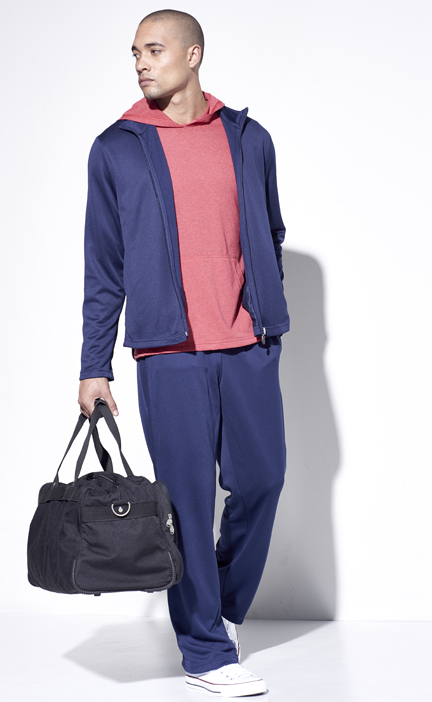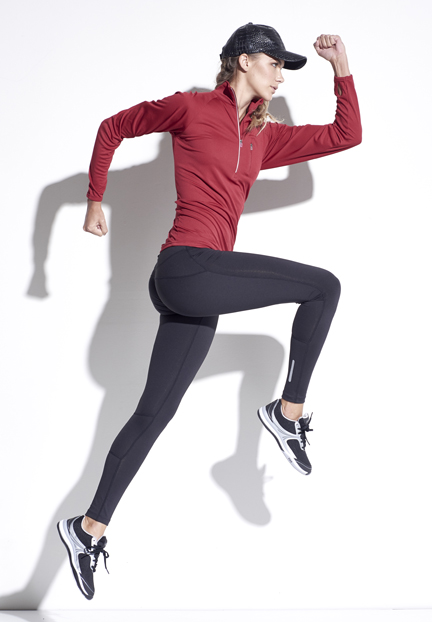Fast Forward - October 2016
WATER COOLER
Separate But Together
Make working remotely work for your team
Between the uncertainty of the job market and the busy professional’s desire to find a better work-life balance, working remotely has steadily gained favor throughout the U.S. workforce. In 2015, the U.S. Bureau of Labor Statistics found that 38 percent of management, business and financial operations employees, and 35 percent of employees in professional and related occupations, worked from home some or all of the time. What’s more, people who work remotely—from home, in particular—are nearly 50 percent more likely to rate job satisfaction a 10 out of 10 compared to office workers.
As an employer with on-site workers, you may be wondering what a remote-employee business might look like. At Remote.co, a website devoted to remote-work resources and tools, companies with established practices share their insights and lessons learned so others can determine if a remote workforce is right for them. More than 100 firms have signed up to answer questions about management, benefits, team roles and more.
Among the tips provided, Remote.co participants shared some elements they feel are key to working successfully with remote teams:
- Establish a culture of trust in the people, products and services
- Use the right tools to ensure clear communication and sufficient access
- Establish opportunities for in-person meetings and collaboration
- Set regular meetings and build mechanisms for feedback and performance evaluation
AD-ITIVES
Rebel, Rebel
French cities’ ban on burkinis boosts sales of full-body coverage swimwear
In much the same way as Prohibition made alcohol more desirable in the U.S., a recent attempt in France to ban one kind of full-body beachwear has turned one woman’s small company into a booming business.
Australian creator Aheda Zanetti designed the burkini—a catchy mashup of burqa and bikini—so that women who wanted to show less skin could still enjoy her country’s popular beach lifestyle. When several cities along the French Riviera banned the burkini from their beaches this summer, citing secularism laws, Zanetti says her online sales increased by 200 percent in the days following the ban.
Zanetti’s burkini is only the latest product to see skyrocketing interest as a result of being made taboo. While the decades-long embargo on Cuban products was still in place, the island’s famous cigars were illegal to import, yet somehow managed to maintain their cult status among American smokers. And though Facebook is banned in China, many users still manage to log on by employing virtual private networks and other, similar tools.
FIVE MINUTES WITH Kate Plummer, CAS, Clearmount Plastics
Promotional By Design
Kate Plummer, CAS, talks about form, function and the family business—Clearmount Plastics
PPB W hy did you decide to work at Clearmount Plastics?
hy did you decide to work at Clearmount Plastics?
Plummer Ha! This is a loaded question. It’s a family company, and I had just graduated when they needed someone to fill in while they found a new office manager. I was just going to stay for two to three months, tops—but I fell in love with the industry and sales, and almost 10 years later I’ve finally stopped calling it my temporary job.
PPB How are you able to apply your design skills to your work at Clearmount? Where do you find inspiration when working with clients?
Plummer Acrylic is an amazing material that allows for so much creativity. Every day is a new challenge for design. My clients also inspire me with what they think of. A lot of graphic artists really love our product, as they’re not limited by pre-made stock items. You want that to be 10 inches and not eight inches? Sure. You want to have an ombre look that matches your PMS colors? Sure. You want to recreate your logo out of sand and embed it inside a custom-cut shape? Sure!
But the people who really inspire me are our production staff. I’m really guilty of saying yes to a project without knowing how to do it, knowing that they’ll save me and come up with a new technique to make it. I owe so much to the staff and their creativity.
PPB Why do you think awards—specifically, three-dimensional, artistic pieces—remain a popular choice for recognition?
Plummer I think they are popular because awards are so valued by the recipient. It’s easy to hand over a gift card but that goes toward groceries or something functional. Having a tangible example of your achievements and success is immeasurable. That’s why I encourage my clients to put thought into the design. This is comparable to a piece of art that will go on a shelf for years. It’s a point of pride.
PPB What types of innovation have you seen in award design over the years?
Plummer I’ve only been part of Clearmount for 10 years, which is a drop in the bucket here. (Our longest working staff member has been here over 40 years!) I’ve seen a lot of change with a lot more experimentation with printing techniques and color.
Right now we’re experimenting with glow-in-the-dark acrylic, metallics and 3D printing (embedded and on the surface). When it comes down to it, we’re still a handmade product, but technology for all facets of our manufacturing is constantly innovating, so we just try and keep up.
PPB Do you think there’s potential for awards to be both functional and beautiful, or are today's awards being crafted into the most ideal designs?
Plummer I totally think so. But as everyone has experienced, you never really know what the client wants. The most effusive praise I’ve ever received on an award was not on one of the many stunners we’ve done, but on an embedded card in a block. It was so simple but they loved it and were completely blown away. It’s so much about personal taste when it comes to design. I think the real question is, are people are asking if it’s the right award for the recipient? Are you truly valuing their contribution with what you’re giving them?
A friend of mine once received an award for the largest sales growth. When I asked him what he got his response was, “One of those Little League plaques.” It really left a sour taste in his mouth, and instead of adding to his achievement, he felt it detracted from it. Who was the distributor who wasn’t pushing the client to think of how the recipient would feel when they got the award? To go with a more adult or modern design? Simplicity is not a bad thing, but thoughtlessness is.
PPB How important is good design in the promotional products industry?
Plummer I think design is king when it comes to our industry. We are promotional products consultants; so much more than someone who can slap a logo on a t-shirt. A boring pen, a cheap t-shirt with no originality—what do you think will happen to these items?
A great promotion doesn’t have to be expensive but it has to be well designed. There has to be thought behind the art and product. Ask your customer this question: What did you give out two years ago, and where are those items now?
TECH TALK


Defying The Laws Of Attraction
The latest performance apparel comes with built-in bug repellent
Performance apparel has offered up technology to prevent sunburns, wick away moisture and prevent odors, but now it’s prepared to protect wearers from bites and stings when they work, play or exercise outside.
The Nobitech athletic apparel line was created in a partnership between textile developer Anovotek, LLC, process chemical manufacturer Pulcra and industry supplier Expert Brand Apparel. “Expert Brand is one of the leading innovators in design and development of smart fabric technology,” says Brooke Daily, a public relations strategist who works on behalf of Nobitech. Sion Shaman, vice president of sales at Expert Brand, adds, ”We are incredibly honored to provide our fashion-forward apparel to this imperative initiative.”
The pieces are crafted from fabric that’s treated with Skintex MR III, a microencapsulated, slow-release insect repellent that remains effective through 25 washes. It is non-toxic to humans but effectively deadly for crawling and flying insects—including mosquitoes that may carry the Zika virus and ticks that can transmit Lyme disease.
Nobitech was on display at the 2016 Summer Olympics in Brazil (ground zero for the current Zika outbreak), in the form of warmup and other apparel for the U.S. polo, swimming and triathlon teams.
BRANDABLE
Pretty As A Picture
Follow these tips when posting your promotional campaigns on Instagram
As a highly visual medium, promotional products make perfect subject matter for Instagram. Capturing your program collateral in a snapshot that could receive thousands of views is a great way to gain traction among prospective clients, provided you make the most of this popular app.
- Get Artistic With Your Images
You want to put your products in the best light on Instagram—literally. Play with lighting and filters, and rearrange the items in new or nontraditional ways. Play with colors and shapes to put a quirky spin on your images.
- Be Solution-Oriented
What are your prospects posting on Instagram? Their images give you insight into their likes, dislikes, pain points and more. Post images of products that relate to these characteristics, and you may gain clients as well as followers.
- Incorporate Video
In the past several months, the time people spent watching videos on Instagram has increased by more than 40 percent. Whether you build a 30-second promo video with beauty shots and voiceover descriptions, or a 60-second client testimonial, video can engage your followers.
- Add Instagram To Your Website
Instagram photos are a great alternative to traditional feedback and testimonials. Get your Insta-happy customers to post photos of them using or receiving your promotional products for bigger impact.
MARKET SHARE
Gold Star Marketing
Brands seek to promote, reward ‘good behavior’ among consumers
Big brands have their pet causes, and they make every effort to publicize the good they’re doing in the world. But can a brand inspire its consumers to do good as well? If incentives are part of the deal, some brands are finding they have no trouble influencing good behavior among their loyal fans.
Starbucks was behind a nationwide voting campaign in the Philippines in May, where customers who could show they’d visited a polling station (the ink-stained fingers were the proof) would receive a free drink. Shoe brand TOMS pledges to donate a pair of kicks to someone in need for every pair purchased. Charities across the U.S. partner up with entertainment venues and events that offer free or reduced admission in exchange for donations.
Indirect efforts by Unilever brand Dove and Dutch brewer Heineken have also proven effective among consumers; Dove’s ”Real Beauty” campaign pioneered the use of models who looked more like consumers, and consequently enjoyed a nearly 50-percent increase in sales in 2014.
Heineken has built responsible-drinking messages into its advertising since 2011; in January, the brewer published a survey showing that 75 percent of drinkers ages 21 to 35 in the UK, the U.S., the Netherlands, Mexico and Brazil limited the amount of alcohol they consumed on the majority of the nights they drank.
Of course, marketing that centers on a social issue can’t be a flash-in-the-pan move. To make a substantial impact, brands need to ensure authenticity is at the core of their campaigns.

